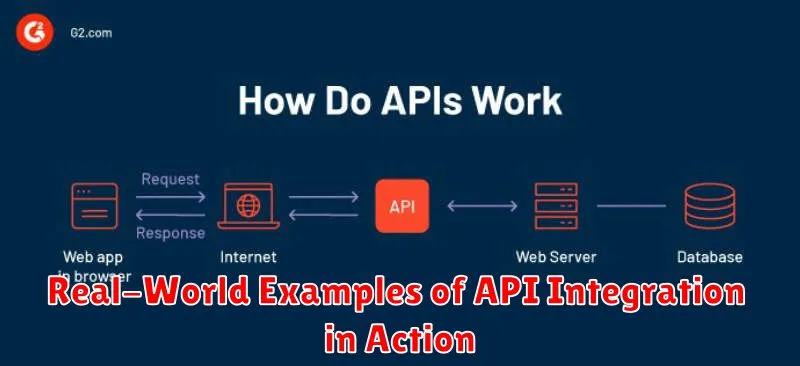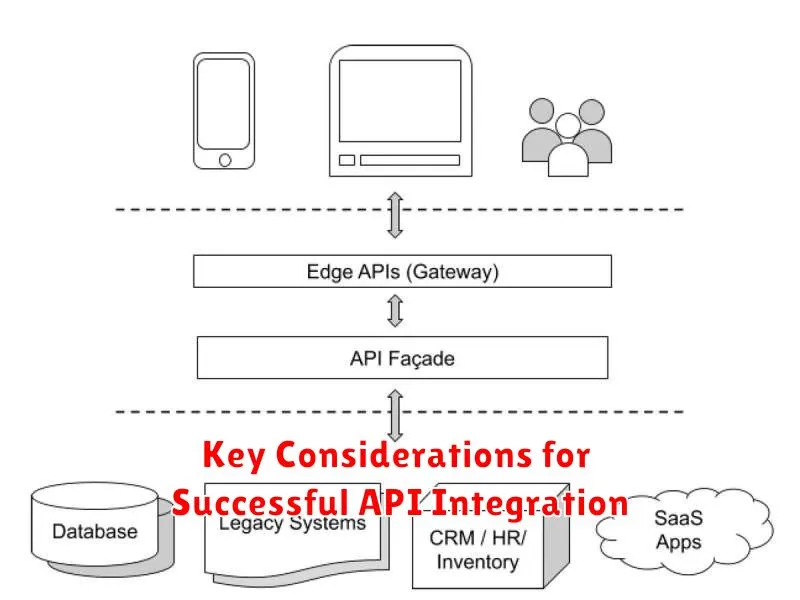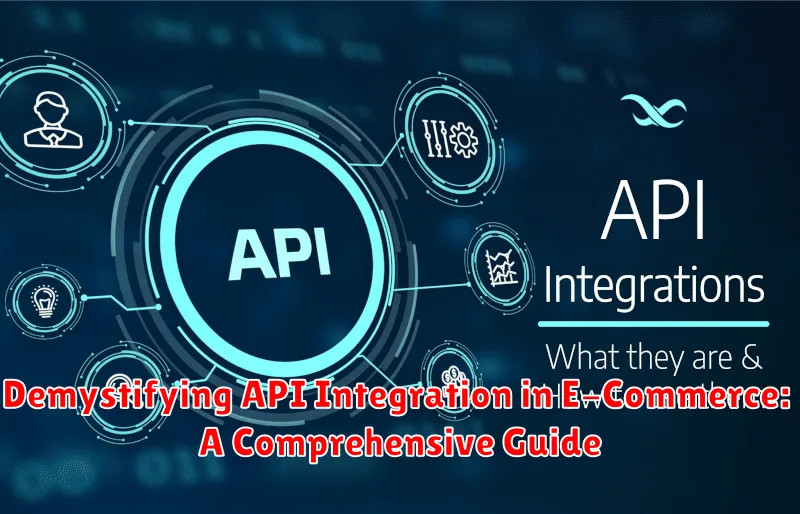In today’s interconnected digital landscape, API integration plays a pivotal role in the success of any e-commerce business. This comprehensive guide aims to demystify the complexities of API integration in e-commerce, providing a clear understanding of its benefits and practical implementation strategies. From streamlining operations and enhancing customer experiences to expanding market reach and boosting sales, leveraging the power of APIs is essential for staying competitive. Whether you’re a seasoned developer or an e-commerce entrepreneur, this guide will equip you with the knowledge to harness the full potential of e-commerce API integration.
This guide will delve into the core concepts of APIs, exploring various types of e-commerce APIs and their specific functionalities. We will cover crucial aspects such as security considerations, best practices for API integration, and common challenges faced during the implementation process. By the end of this guide, you will have a solid grasp of how API integration can transform your e-commerce platform, enabling seamless data exchange and automation for enhanced efficiency and growth. Prepare to unlock the true power of API integration in e-commerce and take your business to the next level.
What is an API and How Does it Work in E-Commerce?
An API, or Application Programming Interface, is essentially a messenger that allows different software systems to communicate and exchange information with each other. Think of it as a waiter in a restaurant: you (the customer/software) tell the waiter (the API) what you want, the waiter relays that to the kitchen (another software system), and then brings you back your food (the requested data).
In the context of e-commerce, APIs enable seamless integration between various platforms and functionalities. For example, an e-commerce website might use an API to connect with a payment gateway like PayPal or Stripe, allowing customers to make secure purchases without leaving the site.
The API works by defining specific requests and responses. When your e-commerce platform needs information, it sends a structured request to the target system’s API. The API then processes this request, retrieves the necessary data, and sends it back in a standardized format that your platform can understand.
Benefits of E-Commerce API Integration
Integrating APIs into your e-commerce platform offers a wealth of advantages, streamlining operations and enhancing customer experience. Improved efficiency is a key benefit, automating tasks such as inventory updates and order fulfillment. This automation frees up valuable time and resources.
Enhanced customer experience is another significant advantage. APIs enable personalized recommendations, real-time shipping updates, and diverse payment options, catering to individual customer needs and preferences.
Scalability and flexibility are also crucial. APIs allow your business to adapt to changing market demands and integrate new functionalities quickly, supporting growth and expansion.
Data-driven insights are readily available through API integration. Accessing and analyzing data on customer behavior, sales trends, and inventory levels empowers informed decision-making and strategic planning.
Common Types of E-Commerce APIs
Several key API types are commonly used in e-commerce, each serving a specific purpose. Understanding these categories can help businesses choose the right tools for their needs.
Product Information APIs
These APIs provide access to product catalogs, including details like descriptions, pricing, and availability. They enable businesses to display product information on various platforms and keep it consistently updated.
Inventory APIs
Inventory APIs allow real-time tracking of stock levels. This is crucial for preventing overselling and ensuring accurate information is displayed to customers.
Order APIs
These APIs manage the entire order lifecycle, from placement to fulfillment. They enable automated order processing, tracking updates, and returns management. Order APIs are essential for a streamlined customer experience.
Payment Gateway APIs
Payment gateway APIs facilitate secure online transactions. They allow businesses to accept various payment methods and process them securely, ensuring PCI compliance and protecting sensitive customer data.
Shipping APIs
Shipping APIs integrate with carriers to provide real-time shipping rates, tracking information, and label generation. They automate shipping processes and improve delivery transparency for both businesses and customers.
Choosing the Right APIs for Your Business
Selecting the appropriate APIs is crucial for successful e-commerce integration. Several factors influence this decision. Business needs should be the primary driver. Identify the specific functionalities you require, such as inventory management, payment processing, or shipping integrations.
Scalability is another key consideration. Choose APIs that can handle your current and future transaction volume. Security is paramount; prioritize APIs with robust security measures to protect sensitive data.
Cost is also a factor. Evaluate pricing models, including transaction fees, subscription costs, and setup expenses. Finally, consider the documentation and support provided by the API provider. Comprehensive documentation and responsive support are essential for smooth implementation and troubleshooting.
Real-World Examples of API Integration in Action

Let’s explore some practical examples of how API integration enhances e-commerce businesses:
1. Automated Inventory Management
Imagine a business selling products across multiple platforms like their website, Amazon, and eBay. API integration allows for real-time inventory updates across all platforms. When a sale occurs on one platform, the inventory count automatically adjusts on all others, preventing overselling and ensuring accurate stock information.
2. Streamlined Shipping and Logistics
Integrating with shipping carrier APIs like FedEx or UPS enables automated label generation, real-time tracking updates, and dynamic shipping rate calculations. This simplifies the shipping process, reduces manual errors, and offers customers transparency regarding their order’s journey.
3. Personalized Customer Experiences
APIs can integrate CRM (Customer Relationship Management) systems with e-commerce platforms. This allows for personalized product recommendations, targeted marketing campaigns, and customized customer service interactions, ultimately boosting customer satisfaction and loyalty.
Key Considerations for Successful API Integration

Successfully integrating APIs in e-commerce requires careful planning and execution. Thorough API documentation is crucial for understanding functionalities, data structures, and authentication methods. A well-defined integration strategy, outlining the scope, objectives, and timeline, keeps the project on track. Scalability is essential to accommodate future growth and increasing data volumes. The chosen API should be able to handle peak loads and expanding operations.
Security is paramount when dealing with sensitive customer data. Robust authentication and authorization mechanisms protect against unauthorized access. Error handling and monitoring are vital for maintaining a smooth user experience. Comprehensive logging and alerting systems help identify and address issues promptly. Lastly, thorough testing validates the integration’s functionality and ensures data integrity across systems.
Overcoming Challenges in API Integration
API integration, while offering significant advantages, is not without its hurdles. Data security is paramount. Employing robust encryption methods and adhering to security best practices are crucial to protect sensitive customer information during transmission.
Real-time synchronization can also be complex. Discrepancies between systems can arise, requiring meticulous error handling and data validation mechanisms. Regular monitoring and testing are essential to maintain data integrity.
Another common challenge is API documentation. Poor or incomplete documentation can hinder the integration process. Selecting APIs with comprehensive and up-to-date documentation is key to a smooth implementation.
Finally, managing API versions and updates requires careful planning. Testing compatibility and ensuring minimal disruption during upgrades are essential for maintaining a seamless e-commerce experience.
Future Trends in E-Commerce API Integration
The future of e-commerce API integration is marked by several key trends. Artificial intelligence (AI) and machine learning (ML) will play a larger role, enabling more personalized product recommendations and predictive analytics for inventory management.
Headless commerce architectures will continue to gain traction, offering greater flexibility and customization. This decoupled approach allows businesses to innovate faster and adapt to evolving customer demands.
The rise of serverless computing will streamline API integrations, making them more scalable and cost-effective. This reduces the burden of infrastructure management and allows businesses to focus on core functionalities.
API-first approaches will become increasingly prevalent, prioritizing the design and development of APIs before other components. This fosters a more modular and interconnected e-commerce ecosystem.
Finally, a stronger emphasis on API security will be paramount. As integrations become more complex, robust security measures will be crucial for protecting sensitive data and maintaining customer trust.

